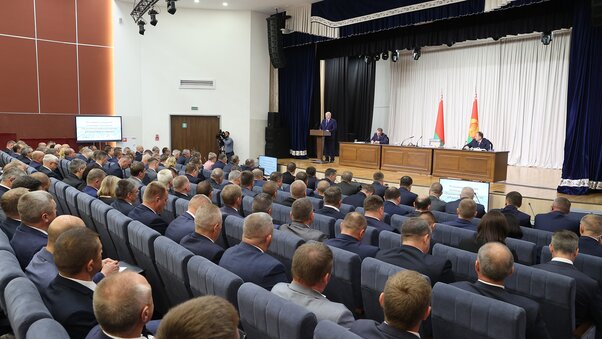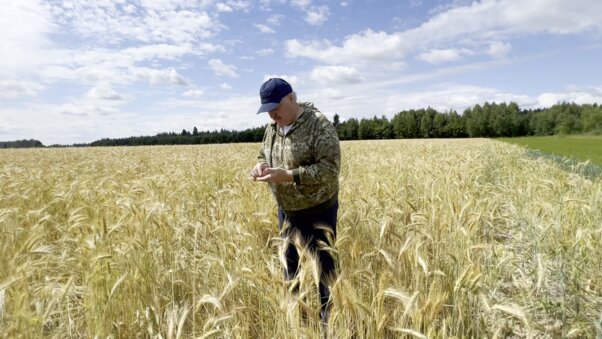Working trip to Mogilev Oblast
- 21
- 4
Belarusian President Aleksandr Lukashenko presented his vision of how a village of the future would look like during his working trip to Mogilev Oblast on 29 September.
“The Soviet Union had a good tradition of addresses of best practices. The youth are coming and they want to see where it is better,” the head of state recalled as he visited the agro-town Vishov in Belynichi District.
The President added that the landscaping of agro-towns was not randomly chosen as a topic of his working visit. There are almost 1,500 agro-towns in Belarus.
“Some 80-85% of the rural population will live in agro-towns in the future. The rest will live in large villages,” Aleksandr Lukashenko said.
Some unpromising villages might also get a boost, but only if there is interest from private individuals.
“The primary focus is on agro-towns,” the head of state emphasized. “Today we would like to see how the village of the future will look like. We write all sorts of candidate and doctoral theses, dissertations, and it is a shame to read the title, not to mention the contents. Let us write and develop something on these very topics. We have enough specialists who know well how it was, how it is now and how it will be. A whole layer can and should be raised to reflect and act.”
Aleksandr Lukashenko also touched upon the progress of farmwork in the region. Upon the arrival in regions, the President always shares with the governors his opinion on what he has seen from his helicopter. “I cannot say that there is no work done here. Agricultural work is underway. But I am afraid you are running late. It is just this fine weather that has relaxed us, but it is going to become cooler next week. We need to pick up the pace, to double it at the very least,” the head of state said.
He added that corn harvesting and winter crops sowing were currently the two most important areas of work in the fields. The need to improve the situation with wetland areas was also mentioned.
In the agro-town Vishov, Aleksandr Lukashenko got familiar with a pilot project to repair roads in promising rural areas, including the use of cement for these purposes. The project was implemented using different methods: concrete was poured on the destroyed asphalt in some parts, some worn-out road surface was recycled and concrete was added to it. Large-format concrete tiles were laid on some streets.
“Apart from Vishov, we have another 1,500 agro-towns where we need to upgrade at least the main streets. We need a sensible approach. We need to create conditions for people to stay in the village,” Aleksandr Lukashenko said.
According to Belarusian Housing and Utilities Minister Gennady Trubilo, there are more than 76,300 streets with a total area of 288.2 million square meters of road surface in the settlements of Belarus. Most of them are made of asphalt. Others are made of concrete. There are also streets with sand and gravel surface.
“The roads were virtually destroyed due to weather conditions in winter and spring. People were complaining. The task was set to bring our roads in order. Will you be able to complete the works in time as you promised?” the President asked.
Deputy Prime Minister Anatoly Sivak said that the repair works were proceeding at an accelerated pace and ahead of schedule.
The head of state demanded to get rid of bureaucratic hurdles in the development of villages and building of new streets and houses. “There is no need for red tape here. We need to do it faster,” the President stressed. “We need to finish this work and get away from these bureaucratic principles. We need to do it in an economical way and we need to remember that we can remove a street and take down houses to make an avenue, but this needs a lot of money.”
“The same is true about individual houses. An individual wants to build a house, and we get in their way with different regulations. If they want to build, let they build. They build houses for themselves,” Aleksandr Lukashenko said.
According to the head of state, if the owner of the house will need help from designers or the Emergencies Ministry, he or she will do it themselves, and there is no need to limit house owners by formal requirements.


